¶ Map
This is a chart showing:
- The aircraft coloured in orange
- VHF Omnidirectional Range - VOR : TRENT TNT 115.7MHz
- NDB : WHI 368kHz
- Airfields: EGOE Ternhill ; EGBD Derby ; EGCT Tilstock
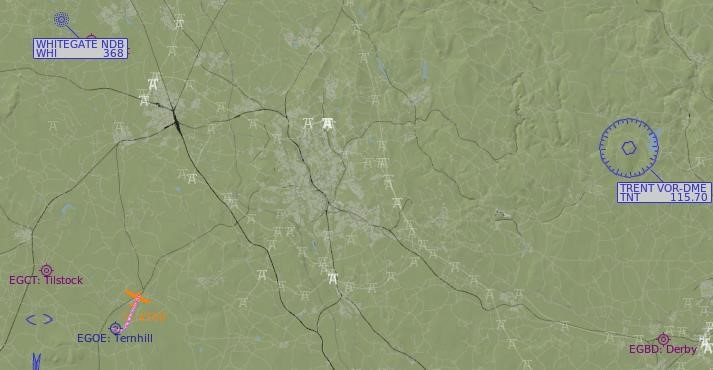
The purpose of the example is to go direct to the TNT VOR from the present position
¶ VOR Receiver
In order to properly fly to this VOR, please refer to the following page: VOR receiver
¶ Flying inbound a VOR
¶ Establish the reception of the VOR
The first step for the pilot is to tune the instruments:
- Tune the VOR frequency on the NAV frequency selector of your choice
- Verify that the VOR instrument is updated (arrow moved from standby position to the beacon)
After tuning the VOR frequency, the red flag must disappear
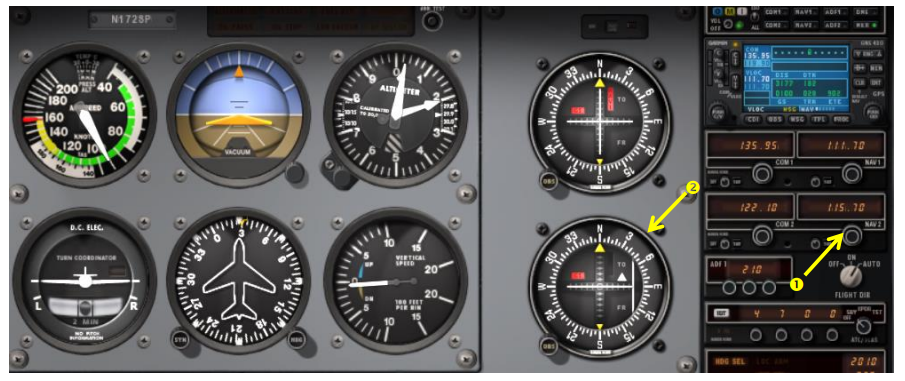
The VOR can sometimes be received at great distances. It is very important to verify the Morse-code identifier of the station to be certain you are navigating from the right beacon
¶ Tune the course on navigation instrument
There are different ways to make a direct to a VOR but, we will give you one of the simplest methods.
The simplest method is to search with the navigation instrument which radial you are currently on.
- Turn the OBS selector (figure 1)
- Turn until you will have the white triangle pointed to the TO mark
and Turn until the vertical needle is centered:
- BAD: needle centred but indicator shows FROM (figure 2)
- BAD: TO indicator is showing but needle not centred (figure 3)
- GOOD: TO indicator and needle centred (figure 4)

¶ Turn to the VOR
When your instrument is tuned, just take the course indication of your instrument and, turn your aircraft toward this course: Heading = Course.
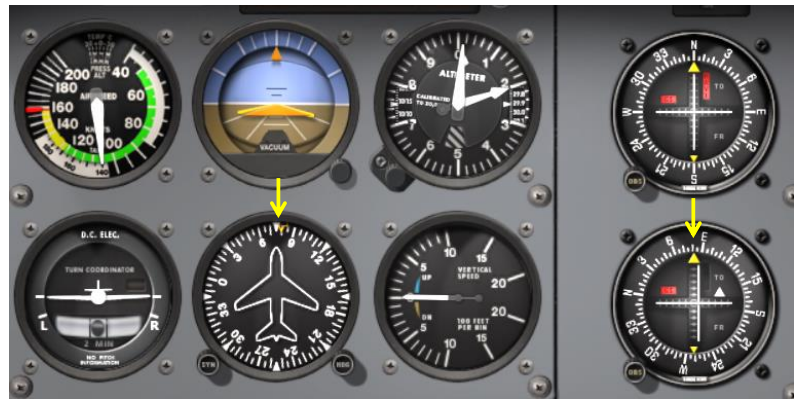
In our example, Course is 80, aircraft turn to 080° heading.
After this turn, the needle, like our example above, can move a little to the right or to the left.
You can make some little adjustment:
- Centre the NAV needle using OBS navigation button again
- Set heading to the new course indication on your instrument
One minute after this manoeuvre, we can see the progress of the aircraft on the map:
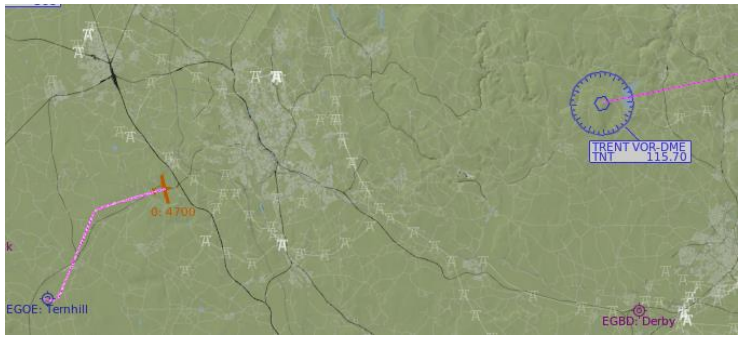
¶ Mind the wind effect
The VOR navigation using CDI and course selector is precise. If there is a crosswind component, the aircraft may leave the radial (aircraft is 'pushed' by the wind off the selected radial).
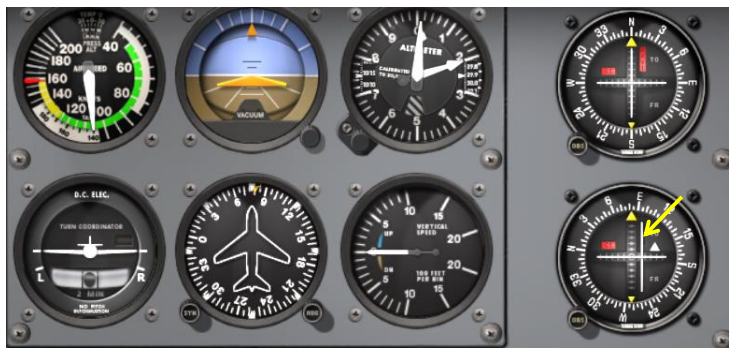
In order to keep the same radial, just perform small adjustments using your heading only!
- Turn in direction of the needle (in our example to the right) in order to centre the needle.
- When the needle is centred, adjust your heading again to the selected navigation course.
Of course, you can compensate for the wind effect by selecting a new heading.
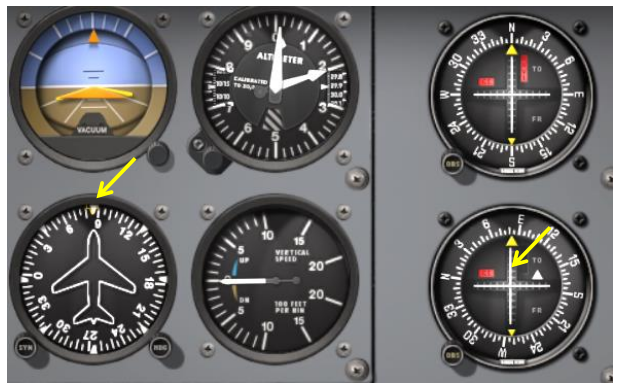
After aircraft manoeuvre and having added some degrees in the heading to compensate wind.
Here is the result after the wind effect and heading adjustment to catch the right course:
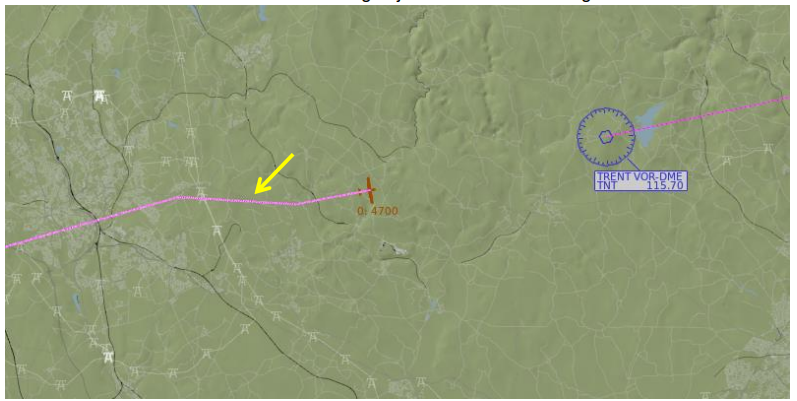 !
!
¶ Overhead the VOR
When approaching the VOR, the needle will move to one direction quickly. If you don't want to change direction, then do not touch heading and navigation instrument.
Your aircraft is in the 'silent cone'. When an aircraft is overhead a VOR, the information given by the beacon is not correct. You must wait a little in order to retrieve proper VOR reception
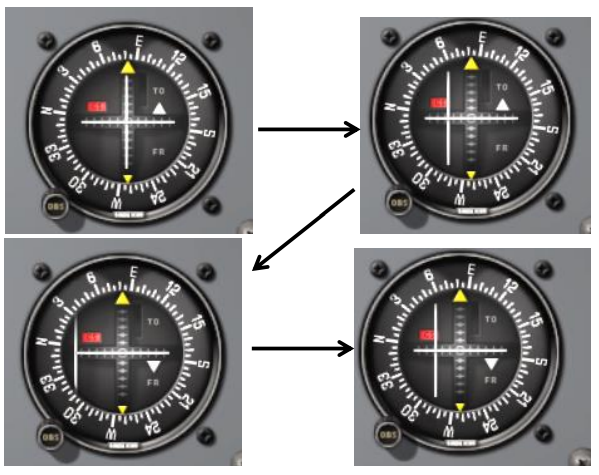
After crossing the VOR, check that the white triangle moved to the FROM (FR) indicator
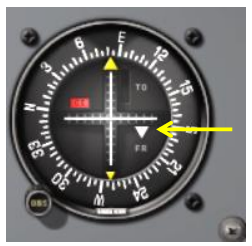
¶ Go forward from the beacon
If you maintain the heading, you continue your route outbound the VOR station. To maintain outbound:
1. Maintain the needle of the VOR navigation instrument centred, and the indicator to FROM position
2. Use the same course heading
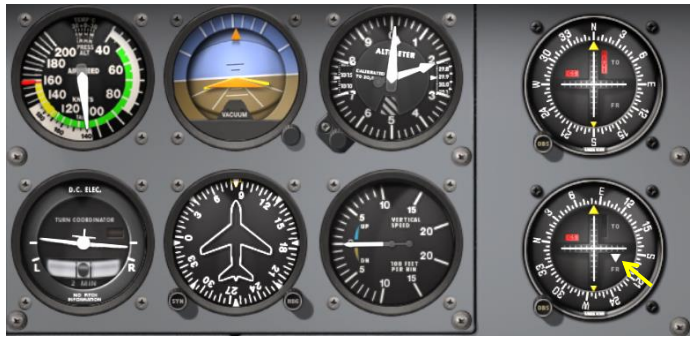
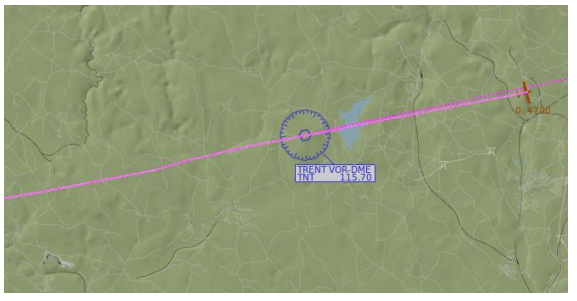
- None
- None
- VID 150259 - Creation
- VID 200696 - Wiki integration
- VID 496402 - Wiki.js integration